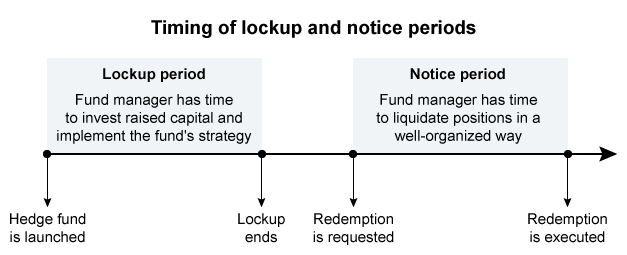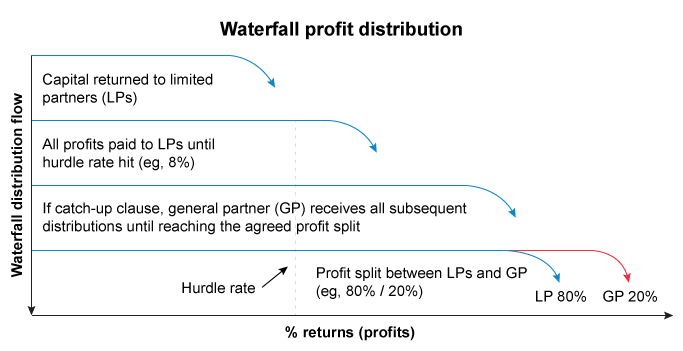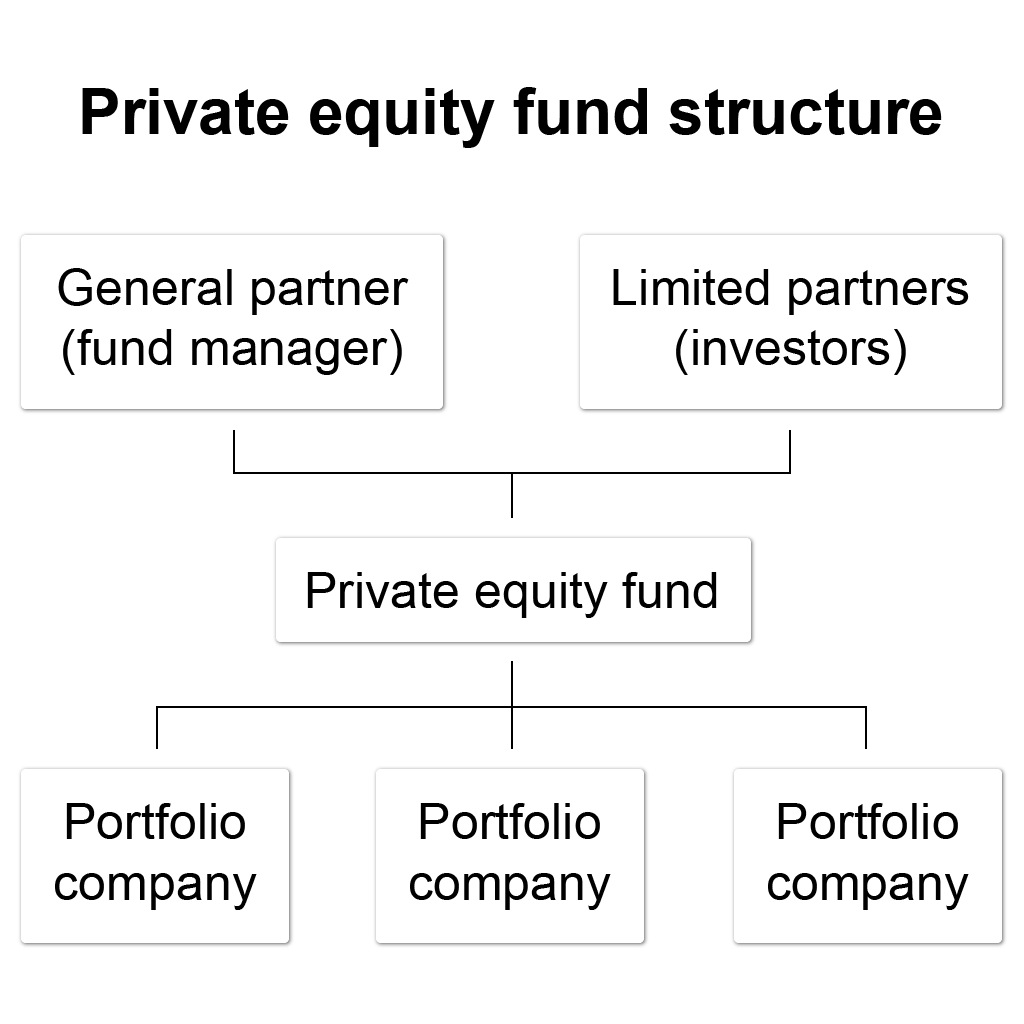CFA® Alternative Investments
Summary, Syllabus, Topics, and Sample Questions (L1, L2, L3)
The CFA® curriculum categorizes assets other than equity, fixed-income, and derivatives as Alternative Investments, covering a wide range of topics from tangible assets like gold to hedge fund strategies. Alternative investments are supplemental strategies to traditional long-only positions and are not necessarily uncommon or recent additions to the investment universe.
Common categories of Alternative Investments include:
- Hedge funds, which use various strategies to aim for positive returns.
- Private capital, including private equity (e.g., leverage buyout, venture capital) and private debt (e.g., direct lending, mezzanine loans).
- Real estate, comprising residential and commercial sectors.
- Natural resources, like commodities, timberland, and farmland.
- Infrastructure, which encompasses buildings, bridges, roads, etc.
Alternative investments may involve non-traditional approaches, allowing flexibility with derivatives, leverage, illiquid assets, and short positions, encompassing traditional and less traditional assets. Active management is typical in Alternative Investments, exploring hedge funds, private equity, real estate, commodities, and infrastructure, emphasizing their common characteristics and role in diversification and potentially higher returns.
The CFAI® Alternative Investments curriculum is an important topic if you work in asset management, as it is expected to capture 49% of global asset management revenue by 2024.
What to Expect in CFA Level 1 Alternative Investments?
This topic explores Alternative Investments, including hedge funds, private equity, real estate, commodities, and infrastructure. In this curriculum, CFAI defines Alternative Investments, the characteristics they have in common, and their usefulness in creating diversification and higher returns.
Exam Weighting
The CFA Level I Alternative Investment weighs 7-10% of the total exam content, so approximately 13-18 CFA Level I exam questions focus on this topic.
| Topic Weight | No. of Learning Modules | No. of Formulas | No. of Questions |
|---|---|---|---|
| 7-10% | 7 | Nearly 15 | 13-18 |
Level 1 Alternative Investments 2024 Syllabus, Readings, and Changes
The CFA Level 1 exam includes 7 total learning modules for 2024. Numerous new texts have been added to the curriculum at all three levels, substantially expanding the focus on the topic area of Alternative Investments. One other change for 2024 is the Introduction to Digital Assets.
| No. of Learning Modules – 7 | No. of LOS – 22 | |
|---|---|---|
|
Summary
This reading provides a comprehensive introduction to Alternative Investments. Alternative investments are asset classes or investment vehicles that supplement traditional long-only positions in stocks, bonds, and cash. Alternative investments include five main categories: hedge funds, private capital, natural resources, real estate, and infrastructure.
|
||
This significant change expands the discussion of alternatives and gives more information on how to use them in an investment strategy. In-depth exploration of alternative asset classes, risk management, and alternative investment structures are combined with fundamental knowledge to produce a simplified learning experience.
Alternative Investment Features, Methods, Structures, Performance, and Returns
This topic focuses on understanding the features and categories of alternative investments. It delves into the distinctions between direct investment, co-investment, and fund investment methods within alternative investments.
Additionally, the discussion explores prevalent investment ownership and compensation structures commonly employed in alternative investments.
Investments in Private Capital: Equity and Debt
Since they may be infrequently and/or privately traded, pricing, valuation, and performance can be much more difficult to assess for alternative investments. This learning module explores the factors, models, and circumstances that impact performance evaluation.
Private Capital, Real Estate, Infrastructure, Natural Resources, and Hedge Funds
This learning module looks at the various categories of alternative investments and their specific characteristics, risks, and returns.
Introduction to Digital Assets
This topic explores the financial applications of distributed ledger technology. It encompasses an explanation of the investment features of digital assets and provides a comparative analysis with other asset classes. Furthermore, the discussion covers various investment forms and vehicles utilized in digital asset investments. Additionally, it involves the analysis of sources of risk, return, and diversification within the landscape of digital asset investments.

CFA Alternative Investments Level 1 Sample Questions and Answers
The sample questions are typical of the probing multiple-choice questions on the L1 exam. During the exam, you have about 90 seconds to read and answer each question, carefully designed to test knowledge from the CFA Curriculum. UWorld’s question bank is built to expose you to exam-like questions and illustrate and explain the concepts tested thoroughly.
At the end of 20X4, a hedge fund had $25 million in assets under management (AUM). The fund has the following fee structure, high-water mark, and 20X5 results:
| Selected Data | |
|---|---|
| Management fee (average assets) | 1% |
| Incentive fee (net of management fee) | 10% |
| Soft hurdle rate | 6% |
| High-water mark (millions) | $27 |
| Year-end fund assets 20X5 (millions) | $30 |
Assuming no inflows or outflows, the incentive fee (in $) earned by this hedge fund for 20X5 is closest to:
- 109,000
- 272,500
- 300,000
Hedge funds charge a management fee and an incentive fee. The management fee is calculated as a percentage of the total value of the fund’s assets under management (AUM). It is assessed each year regardless of profitability.
The incentive fee is levied against the fund’s annual gains, subject to certain conditions. It is calculated either gross or net of the management fee. The net calculation subtracts the management fee from AUM to arrive at an adjusted AUM that is used to calculate the fund’s profits.
The high-water mark represents the value of AUM, net of fees, at any time during the fund’s existence. To earn an incentive fee, the fund must exceed the high-water mark, the base from which the fee is calculated.
The hurdle rate is the minimum profit that the fund must earn (usually annually) before it receives an incentive fee. The hurdle rate can either be “soft,” meaning that the incentive fee is calculated based on the entire profit, or “hard,” meaning that the incentive fee is based on only the excess profit above the hurdle rate.
In this scenario, the fund generated net returns in 20X5 of 18.9% ( = (29.725 – 25) / 25 ), above the soft hurdle rate of 6%, and eclipsed the high-water mark of $27 million. Therefore, the fund earned an incentive fee of 10% of profits, net of the management fee on average assets of $27,500,000:
0.10 × (29,725,000 − 27,000,000) = $272,500.
(Choice A) $109,000 is the result of incorrectly assuming a hard hurdle rate is in effect.
(Choice C) $300,000 is the incentive fee if management fees are not deducted.
Things to remember:
Hedge funds charge both a fixed management fee and a variable incentive fee. The incentive fee is contingent on whether the fund earns a profit and may be subject to a high-water mark and hurdle rate.
A hedge fund manager wants the power to liquidate positions in a well-organized way whenever necessary and plans to impose restrictions on investors’ ability to redeem capital. Which of the following restrictions would be most appropriate?
- Notice period
- Lockup period
- Redemption fee
Investor redemptions can significantly impact the performance of hedge funds. Unplanned redemption requests may force the fund manager to sell illiquid or volatile assets at unfavorable prices. This may harm fund performance and result in losses for the remaining investors.
Hedge funds often impose restrictions on investors, discouraging or prohibiting redemptions during specific periods:
- A lockup period is the minimum time an investor is committed to a fund after the initial investment. This restriction should give the fund manager a reasonable time frame to select and acquire assets that optimize the fund’s strategy. Withdrawals are not allowed during this period, but nothing restricts redemptions after the lockup period ends (Choice B).
- A notice period is the length of time an investor is required to wait to receive a redemption after requesting it. This restriction gives the fund manager more time to convert assets into cash, which reduces the risk of forced selling and makes the notice period the most appropriate choice for fund managers concerned about liquidity.
- Redemption fees are paid by investors when redeeming their capital and are generally added back to the fund. The fees compensate the remaining investors for losses the fund may eventually suffer when liquidating positions in an accelerated way. Redemption fees discourage but do not prohibit redemptions at any time (Choice C).
Things to remember:
Hedge funds often impose restrictions on redemptions.These restrictions may prohibit investors from redeeming for a period after the initial investment (lockup period) and/or require advance notice for processing redemptions (notice period). Funds may also impose redemption fees, which discourage—but do not prohibit—redemptions and generally compensate the remaining investors for any resulting losses.
For the general partner in a private equity or venture capital fund, which of the following waterfall distribution methods is most advantageous compared to the others?
- Clawback
- Deal-by-deal
- Whole-of-fund
Alternative investments (eg, private equity, venture capital, real estate) often have a waterfall distribution framework for paying out returns/profits. Generally, limited partners (ie, LP investors) receive distributions equal to their initial capital outlay plus profits up to the hurdle rate; the general partner (GP) is then paid a performance fee. At this point, unless the limited partnership agreement contains a catch-up clause, distributions and profits are split proportionately between the GP and LPs.
Waterfall distribution methods are classified as either:
- deal-by-deal (American style) or
- whole-of-fund (European style).
The timing of performance fee payments makes deal-by-deal waterfalls more advantageous to the GP since each deal is evaluated as each investment is exited. This allows the GP an opportunity to receive performance fee cash flows earlier (eg, annually) than under the whole-of-fund method.
(Choice A) In deal-by-deal waterfalls, a clawback provision would likely be included in the partnership agreement to protect the LPs by restoring the profit split if subsequent investments in the portfolio do not earn performance fees. This provision “claws back” the performance fee already paid to the GP and is not to the GP’s advantage.
(Choice C) A whole-of-fund waterfall pays the GP based on the performance of the entire fund. This delays payment of performance fees until the end of the fund’s life (eg, 7–8 years), which is not to the GP’s advantage.
Things to remember:
In alternative investments, deal-by-deal waterfall distributions are more advantageous to the general partner (GP) due to the timing of performance fee cash flows. The performance of each deal is evaluated as each investment is exited, potentially earning the GP a performance fee. Under the whole-of-fund method, the GP is paid performance fees only at the end of the fund’s life.
What to Expect in CFA Level 2 Alternative Investments?
These readings focus on real estate, private equity, and commodities. The readings describe real estate investments, both private and public, and methods for analysis and evaluation. Private equity, including venture capital and leveraged buyouts, is examined from the perspectives of both a private equity firm evaluating equity portfolio investments and an investor considering participation in a private equity fund. Strategies involving commodity hedging are also discussed.
The CFA Level 2 Alternative Investment (AI) is not only fundamental to passing CFA Level 2 but to succeeding in the CFA overall.
Exam Weighting
CFA Alternative Investment has a weighting of 5-10% of the total exam content, such that approximately 4-8 questions or 1-2 item sets focus on this topic.
| Topic Weight | No. of Learning Modules | No. of Formulas | No. of Questions |
|---|---|---|---|
| 5-10% | 4 | Around 20 | 4-8 |
Level 2 Alternative Investments 2024 Syllabus, Readings, and Changes
The 2024 CFA Level 2 exam comprises four learning modules. Notably, Private Equity Investments has been removed from the readings, and Hedge Fund Strategies has been introduced into the curriculum.
| No. of Learning Modules – 4 | No. of LOS – 29 | |
|---|---|---|
|
Summary
These learning modules focus on the following categories of Alternative Investments: real estate, private equity, and commodities. Real estate investments, both private and public, are described, and methods for analysis and evaluation are presented. Private equity, including venture capital and leveraged buyouts, is examined from both the perspectives of a private equity firm evaluating equity portfolio investments and of an investor considering participation in a private equity fund. |
||
Although it is commonly known that real estate contributes significantly to a balanced portfolio’s diversification, applicants should be aware of how significantly the risk profile of real estate investments varies depending on the type of asset. The “Real Estate Investments” material describes the risk profile of real estate debt vs equity (as a lender or owner of mortgage-backed securities), primarily focusing on commercial real estate.
Overview of Types of Real Estate Investments
Real estate property holds substantial importance within investment portfolios, offering an appealing source of current income.
This learning module provides a comprehensive comparison of the features, classifications, primary risks, and fundamental structures of both public and private real estate investments. It also delves into the roles real estate plays in portfolios and the factors determining its economic value.
Furthermore, the module explores various commercial property types, shedding light on their unique investment traits. It covers the due diligence procedures applicable to both private and public equity real estate investments. Additionally, it addresses real estate investment indexes, including their construction methods and potential biases


Investments in Real Estate through Publicly Traded Securities
These learning modules compare various characteristics, classifications, and risks for public and private real estate investments. They also describe the valuation principles and approaches for pricing alternative assets along with discussion on the advantages and disadvantages of investing in real estate through publicly traded securities compared to private vehicles.
Introduction to Commodities and Commodity Derivatives
This reading provides a discussion of commodities and commodity futures, including scenarios of contango and backwardation for futures prices.
Hedge Fund Strategies
This topic focuses on classifying hedge fund strategies, including equity-related, event-driven, relative value, opportunistic, specialist, and multi-manager strategies. It delves into the investment characteristics, strategy implementation, and the role each plays in a portfolio.Additionally, the discussion encompasses how factor models can be utilized to comprehend hedge fund risk exposures and evaluates the impact of allocating to a hedge fund strategy within a traditional investment portfolio.
CFA Alternative Investments Level 2 Sample Questions and Answers
The provided sample questions exemplify the level of complexity and depth encountered in the Level 2 exam. They are presented as item sets, each accompanied by a vignette that creates a scenario designed to assess your understanding of the CFA Level 2 Curriculum. It’s worth noting that on the actual exam, each vignette applies to four questions, but we’ve included a few extra questions to enhance your learning experience. We strongly recommend reviewing the detailed explanations provided for each question. UWorld’s question bank is specifically designed to familiarize you with exam-style questions and provide comprehensive explanations to help you grasp the tested concepts thoroughly.
Passage
Chao Li is a vice president at Tailwind Capital, a private equity (PE) firm. He is currently raising £100 million for Tailwind Fund A. Li meets with An Heng, an associate at Insular Insurance Co., a potential institutional investor. In their meeting, Li explains the general structure of PE funds to Heng:
- Statement 1: The limited partners (LPs) and the general partner (GP) in a private equity fund participate in managing the fund.
- Statement 2: The GP is entitled to carried interest, which is typically a percentage of the fund’s profits after management fees.
- Statement 3: PE funds are closed-end funds, so LPs can redeem their investments only at specified times.
Heng says, “I understand there are costs associated with investing in PE, such as significant performance fees, dilution costs whenever the PE firm starts new funds, and annual audit costs. And I know that there are some agency risks involved with investing in a PE fund. Is there a governance provision that would address GP gross negligence?”
Subsequently, Li raises the full £100 million for Fund A. One of the fund’s investments is ModernWare, an online services company. The initial investment is £20 million: £13 million in debt, £2 million in preferred equity, and £5 million in the PE fund’s equity. Tailwind plans to sell ModernWare 5 years from now and plans to reduce the debt balance by £10 million by the time of exit. The promised return for the preferred equity holders is 15%.
Several years after the fund’s inception, Tailwind exits two investments: StoneWare and BronzeWare (Exhibit 1). Carried interest to the GP is accrued on a deal-by-deal basis and equals 20% of the profits from each exit. The hurdle rate is 10%. When a deal’s IRR is above the hurdle rate, carried interest is accrued; when a deal’s IRR is below the hurdle rate, a clawback penalty amount is accrued if there is a loss.
| Exhibit 1 Investment Exits | |||
|---|---|---|---|
| Company | Initialinvestment (at T = 0) | Profit from exit (£ millions) | Exit year |
| StoneWare | 8 | 3 | T = 3 |
| BronzeWare | 5 | -1 | T = 4 |
Twelve years after the fund’s inception, Li meets with Heng again to review Fund A’s performance, shown in Exhibit 2.
| Exhibit 2 Tailwind Fund A Performance | ||||||
|---|---|---|---|---|---|---|
| Committed capital (£ millions) | Paid-in capital | Net IRR(%) | Distributions to paid-in capital | Residual value to paid-in capital | Total value to paid-in capital | Maturity |
| 200 | 190 | 25.0% | 1.40 | 1.45 | 2.85 | 12 years |
Which of Li’s statements on Tailwind’s fund structure is incorrect ?
- Statement 1
- Statement 2
- Statement 3
Statement 1: The limited partners (LPs) and the general partner (GP) in a private equity fund participate in managing the fund.
Statement 2: The GP is entitled to carried interest, which is typically a percentage of the fund’s profits after management fees.
Statement 3: PE funds are closed-end funds, so LPs can redeem their investments only at specified times.
PE funds are typically structured as limited partnerships in which the GP (ie, fund manager) acts as an agent on behalf of the LPs (ie, investors). The GP actively manages the fund and is responsible for all debts (ie, unlimited liability). The LPs commit capital to the GP, and their liabilities are limited to their invested amounts. Statement 1 is incorrect since LPs are not actively involved in managing the fund.
(Choice B) In exchange for managing funds, GPs charge management fees, some transaction fees, and carried interest.
(Choice C) PE funds are closed-end funds since existing investors are restricted from redeeming their shares for long periods of time. In addition, new investors can be restricted from entering the fund during certain windows.
Things to remember:
A private equity fund consists of a general partner (GP) (ie, fund manager) and limited partners (ie, investors). The GP is entitled to management fees and carried interest in exchange for managing the fund. However, the GP is responsible for all the fund’s debt (ie, unlimited liability), whereas the limited partners’ liabilities are limited to their invested amounts.
Which governance provision most likely addresses GP gross negligence?
- No-fault divorce
- Key man clause
- Removal for cause
| Corporate governance terms |
|---|
|
PE funds follow strict corporate governance terms to minimize agency risk. This is done by aligning the interests of the fund manager (ie, general partner or agent) with those of the investors (ie, LPs or principals). A fund’s prospectus usually includes a removal for cause provision that allows for the early termination of a GP based on grounds of gross negligence, felony conviction, bankruptcy, or breach of contract.
(Choice A) No-fault divorce enables the LPs to remove the GP without cause provided that a supermajority of LPs approves.
(Choice B) A key man clause addresses how GPs may replace executives (eg, CEO, CFO) in portfolio companies before making new investments. If a key executive leaves a portfolio company, the GP must replace that executive before investing in new portfolio companies.
Things to remember:
Corporate governance terms help align the interests of a PE fund’s manager with those of the investors. A fund’s prospectus usually includes a removal for cause provision that allows for the early termination of a GP based on grounds of gross negligence, felony conviction, bankruptcy, or breach of contract.
When speaking about costs associated with investing in private equity, Heng is incorrect with regard to:
- annual audit costs
- significant performance fees
- dilution costs when the firm starts new funds
| Costs associated with investing in private equity | |
|---|---|
| Transaction costs | Due diligence, bank financing, legal fees, sales transactions |
| Fund setup costs | Legal costs for setting up a fund |
| Administrative costs | Based on NAV, includes custodian, transfer agent, and accounting fees |
| Audit costs | Annual audit fee |
| Management and performance fees | Assets under management (AUM) fee (eg, 1% of AUM) plus performance fee (eg, 20% of profits) |
| Dilution costs | Dilution from subsequent fundraising or from stock options exercise |
| Placement fees | Upfront fee based on amount raised or trailer fee based on amounts invested |
Certain costs are associated with PE investing, as shown above. Although most costs directly reduce investor profits, dilution costs are more indirect. Dilution occurs when a PE firm raises additional capital for an existing fund or when a portfolio company’s management exercises stock options. Both events create additional shares, which dilutes the ownership percentages for existing shareholders. Heng’s comment regarding dilution is incorrect; new funds start with no dilution since there are no existing shareholders.
(Choices A and B) Audit costs and performance fees are costs associated with investing in PE.
Things to remember:
Dilution occurs when a PE firm raises additional capital for an existing fund or when a portfolio company’s management exercises stock options. Both events create additional shares, which dilutes the ownership percentages for existing shareholders.
What to Expect in CFA Level 3 Alternative Investments?
CFA Level 3 Alternative Investments delves into the unique regulatory and investment characteristics of major hedge fund strategy categories. It also delves into the role of alternative assets within a multi-asset portfolio and how they can help mitigate the risk associated with long-only equity investments. The curriculum explores various approaches to asset allocation when incorporating alternatives, whether through traditional methods or using risk- or factor-based approaches. Notably, there are two out of the 35 (5.7%) Level 3 readings dedicated to Alternative Investments.
Candidates will explore these concepts and principles in greater depth compared to the broader coverage in the CFA Institute Level 2 Alternative Investments curriculum.
Exam weighting
The CFA Alternative Investment curriculum has a weighting of 5-10% of the total exam content so approximately 1-2 item sets and 4-8 essay questions will focus on this topic.
| Topic Weight | No. of Readings | No. of Formulas | No. of Questions |
|---|---|---|---|
| 5-10% | 2 | Around 5 | 8-13 |
Level 3 Alternative Investments 2024 Syllabus, Readings, & Changes
The CFA Level 3 exam allocates approximately 5.7% of its content to Alternative Investments, featuring two readings. While there were 17 Learning Outcome Statements (LOS) in 2023, the 2024 curriculum streamlines this to 16 LOS in the Alternative Investments section.
| No. of Readings – 2 | No. of LOS – 16 |
|---|---|
|
Summary
Presents distinctive regulatory and investment characteristics of the major categories of hedge fund strategies. Discuss the role alternative assets play in a multi-asset portfolio and explore how alternatives may mitigate long-only equity risk. Discusses approaches to asset allocation when incorporating Alternatives in the opportunity set whether using the traditional asset class approach or risk or factor-based investing. |
|
Hedge Fund Strategies
This reading discusses important hedge fund categories as well as the investment characteristics of six main hedge fund strategies: equity-related, event-driven, relative value, opportunistic, specialist, and multi-manager strategies.


Asset Allocation to Alternative Investments
This study discusses the potential benefits of adding Alternative Investments to a portfolio of traditional investments that typically include debt and equity. Characteristics of Alternative Investments that impact asset allocation decisions are discussed. Factor-based optimization versus mean-variance optimization is compared along with a discussion of liquidity concerns and time horizon regarding Alternative Investments’ suitability.
Study Tips for CFA Alternative Investments
Besides the typical long-only investments in stocks, bonds, and cash, there is also room for alternative assets in a diversified portfolio. These alternative investments encompass hedge funds, private equity, real estate, natural resources, and infrastructure – the five main categories. It's important to note that for the Level 1 exam, candidates aren't required to possess an extensive understanding of these concepts. However, in Levels 2 and 3, the readings delve deeper into these subcategories.
- Strategy Differentiation: Distinguishing between various hedge fund strategy categories is vital for effective decision-making.
- Quantitative Aspects: While CFA Level 1's Alternative Investments mainly focus on qualitative aspects, it's essential to grasp key investment return calculations and performance metrics.
- Limited Calculator Use: Expect minimal calculator usage during this predominantly qualitative study session.
- Complex Learning Curve: Given their relative unfamiliarity, alternative investments present a wealth of new terminology, valuation models, and market structures to master across all three CFA levels.

Frequently Asked Questions
The learning modules and practice questions predominantly emphasize conceptual understanding, particularly focusing on definitions and contextual comprehension, making them relatively easy to score well on. While a limited number of calculations are involved, primarily about cost analysis and the impact of fee structures on returns, these too can be mastered with practice.
For registered candidates, the CFA Institute offers official study materials and an array of online resources accessible through its website. However, engaging with a comprehensive QBank that spans all chapters and readings is the most effective approach to preparing for the exam. The UWorld CFA QBank, in particular, provides a substantial collection of over 100 questions, each accompanied by detailed explanations, extensively covering the domain of artificial intelligence.
Mastery in Alternative Investments demands rigorous practice, and there’s no better tool than QBank sessions. UWorld’s CFA Level 3 prep is not just cost-effective with three tailored plans but also boasts an abundance of QBank resources. Elevate your preparation with progress-tracking through Mock Exams, engaging lecture series, and a suite of flexible, student-centric features. It’s the unparalleled companion to ensure your triumph in acing the exam.



